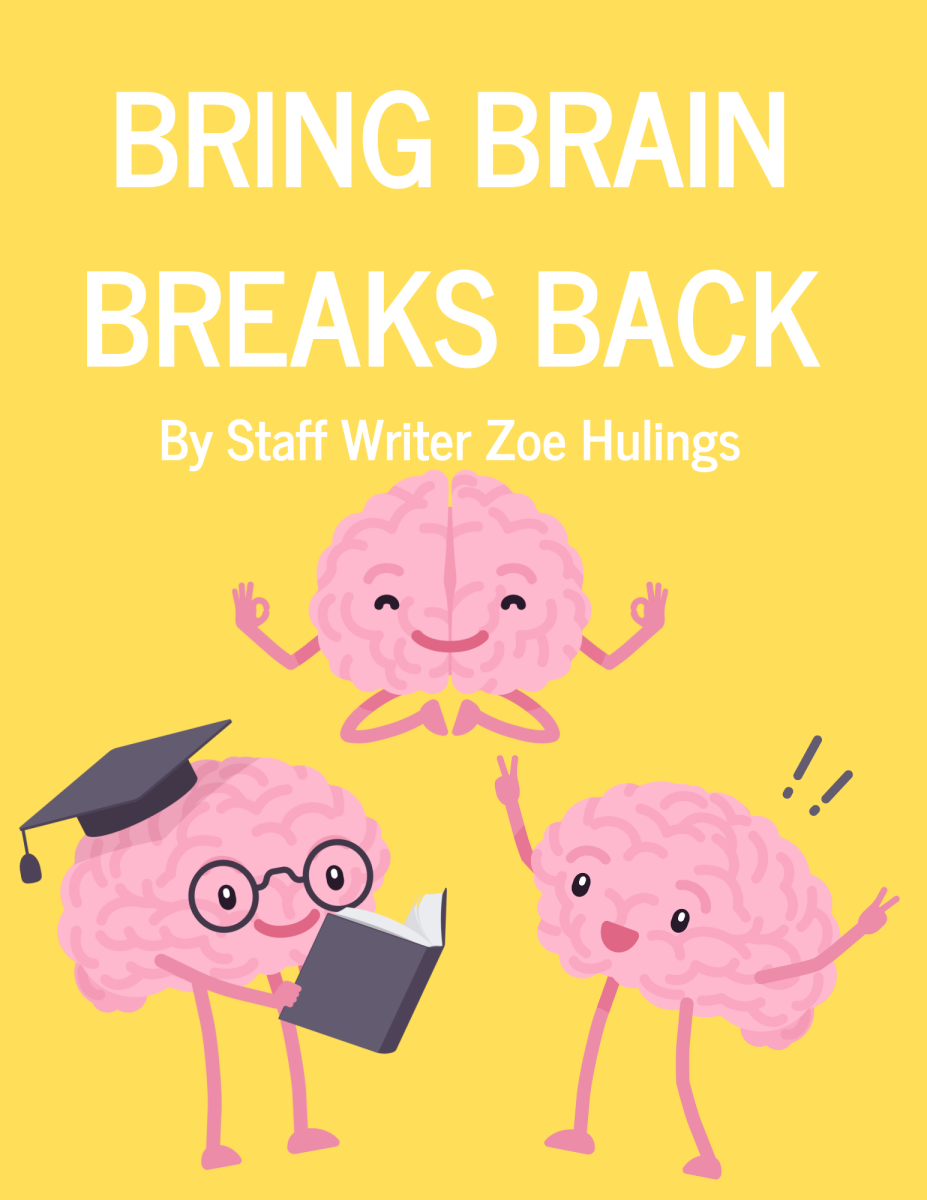This story previosly ran in our October 2023 print issue.
As a junior at Emmaus High School, I’ve noticed some drastic changes over the last three years. For starters, the school saw a lot of new faces in the staff. With that came more security and safety measures, different schedule structure, and a difference in the way midterm and final exams were run. All of those can be expected with a change in authority. The change that caught me off guard the most, however, was the lack of brain breaks given during the class period.
Brain breaks are mental breaks designed to help students stay focused and attentive, according to an article by the Winston Institute. During my freshman year I had plenty of breaks. My teachers would pause instruction, let us talk to our classmates, and stretch our legs for a few minutes. Now I hardly have any.
I want to make it clear that I am not blaming the new staff or policies for the lack of brain breaks, but I do think this issue should be brought to the teachers’ attention. Sitting for 80 minutes a class, in four classes a day, five days a week, 183 days out of the year is a lot. Classes get boring, I lose focus, and ultimately, my grades can end up suffering.
Students can concentrate for an average of 3-35 minutes before needing a break, according to Gitnux, a platform in which readers can find quality information and insight on a number of different subjects. After 15-20 minutes students’ attention spans tend to drop to a minimum of zero percent, meaning it takes 15-20 minutes for teachers to lose 100 percent of their students’ attention. If studies are showing that students have short limited attention spans, why are we expected to sit and listen for one hour and 20 minutes every class?
I can tell that my teachers try their best to keep the class engaged, but saying, “I know you’ve been sitting for a long time, I promise I’m almost done talking,” or giving us a five minute phone “break” during the last five minutes of class doesn’t have the desired effect.
As a teacher, if you are aware that your class is uninterested and not paying attention, why are you continuing to structure your classes the same way? Instead of telling us the class is boring or you’ve been lecturing for a while, structure the class a little differently to keep us engaged.
I can name one teacher that regularly makes my class stand and move around at the halfway point of the class. This is great, it gives me just enough energy to stay focused for the rest of the class. That teacher is my AP Precalculus teacher, Sarah Kinzel. We play short games, have rock-paper-scissors tournaments, and even just chat for a few minutes.
Kinzel is able to read the cues of her students to know when it is time for them to get a break and regroup.
“If I can see that kids are starting to zone a little and the engagement isn’t quite what it was or what it usually is, that’s usually my cue,” Kinzel said.
The idea of brain breaks is still heavily pushed at the teachers. Kinzel shared with me that our principal, Beth Guarriello, talks about breaks in every email and meeting and even offers many examples of what teachers can and should be doing with their students. If this is the case, then why is only one out of my seven teachers giving them?
I get that teachers are passionate about what they’re teaching. I get that classes need to be at a certain point in the curriculum by a certain date. I get it. What I don’t get is why teachers can’t seem to provide even a two to three minute break.
Students should be allowed to go for a short walk, check our phones, or put our heads down for a few minutes during each class. Not only will this improve the students’ moods, but it will also give teachers a chance to review their plans and get the next activity set up.
I know there’s more than just one teacher in the school giving brain breaks, but it should be all teachers, not just a small minority. If students ask for a brain break, let them have one. Otherwise, chances are they’re stop listening for the rest of the period. Brain breaks shouldn’t be a once in a while, special “treat” that students get when their teacher is in a good mood. They should be given every day, as a way for the students and teacher to recollect themselves, restart, and get reengaged. The brain breaks won’t only benefit the students but the teachers and the school community as a whole.














